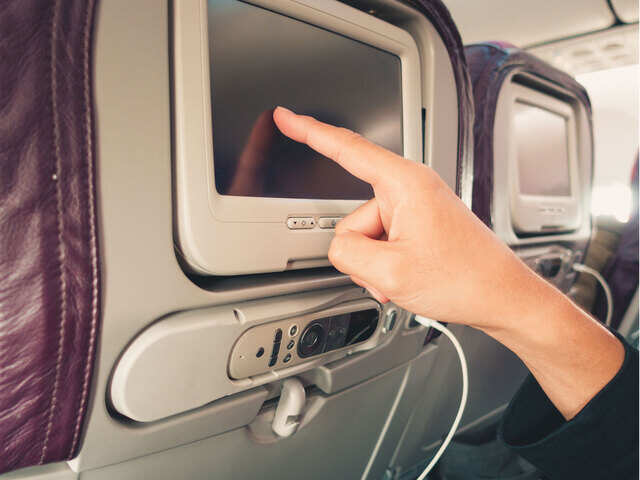In-flight wifi services from october: here's what you have to pay back

EW DELHI: Soon, it would be possible for Indian fliers to make calls and browse internet while flying as the Department of Telecom is set to allow in-flight connectivity (IFC) services from October. As per the existing rules, no person can use any electronic device which intentionally transmits radio signals at all times while on board an aircraft for the purpose of flight. Technologically, it would not be very difficult for Indian carriers to launch the facility after they obtain the licence. However, providing IFC services will depend on its cost and price.
How much it will cost
According to aviation experts, it would be tough for carriers to provide IFC since the cost and turnaround time for retrofitting an aircraft for IFC are quite high. "As per industry sources, the cost of installation is estimated to be around $100,000 per aircraft and turnaround time would be about eight days. The number is a guesstimate and depends on many factors like aircraft type, fleet size, bandwidth, other tech specs and regulatory requirements," says Amber Dubey, partner and India head of aerospace and defence at global consultancy KPMG. However, Peeyush Naidu, Partner, Deloitte LLP, gives a different estimate. "The cost of retrofitting an aircraft could be roughly half a million dollars and the turnaround time for retrofitting could be anywhere between 5-15 days depending on the type of the aircraft," he says. Though estimates vary, it seems the cost of providing IFC is certainly going to be high.
What you may have to pay
Given the cost and turnaround time, it shouldn’t be surprising if IFC services are expensive, at least initially. Citing officials, a TOI report published in January said the charges for net connection might range from Rs 500 to Rs 1,000 for 30 minutes to an hour as per international standards and taking into account the charges levied by service providers for slots on satellites. "Airlines across the world use different pricing strategies for connectivity services. If we look at pricing internationally, charges for these services may be in the range of Rs 1,000 for an hour’s usage. However, airlines may consider the opportunity to segment operations, customers and charge differently – to differentiate their product experience from other airlines, to enhance product offering for certain customers — frequent fliers, premium customers, as an ancillary revenue opportunity, or even based on stage-lengths like timings (early morning flights with more corporate demand) of flights, and so on," explains Naidu.
What customers want
Even if the carriers obtain the licence, retrofit the aircraft, and roll out the IFC services, will Indian consumers choose an airline over another for data connectivity? "Initially one may expect customers to be partial to airlines that may offer IFC. Since it’s a voluntary offering, it doesn’t affect the base air fare. Passengers may choose not to buy the service," says Dubey. However, Naidu says that given the stage-lengths of our domestic flights and quality of data access before and after flights, it is unlikely to have a significant impact on passengers’ choice of airline in India.
Nice
ReplyDelete